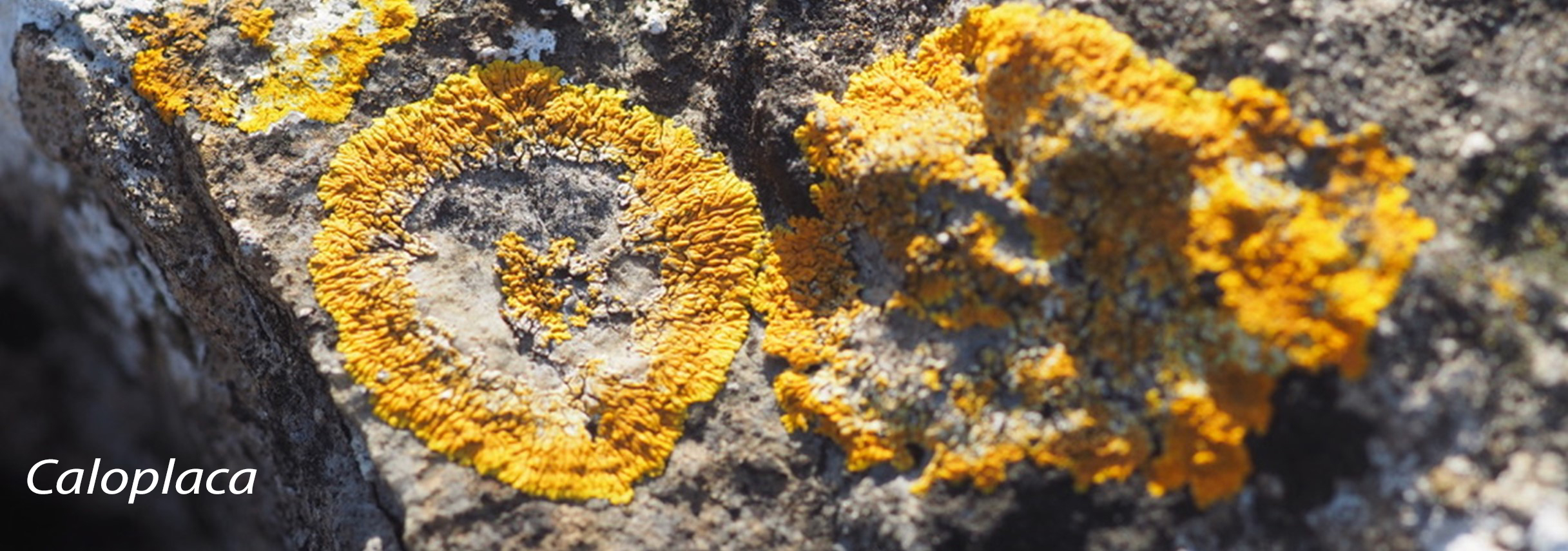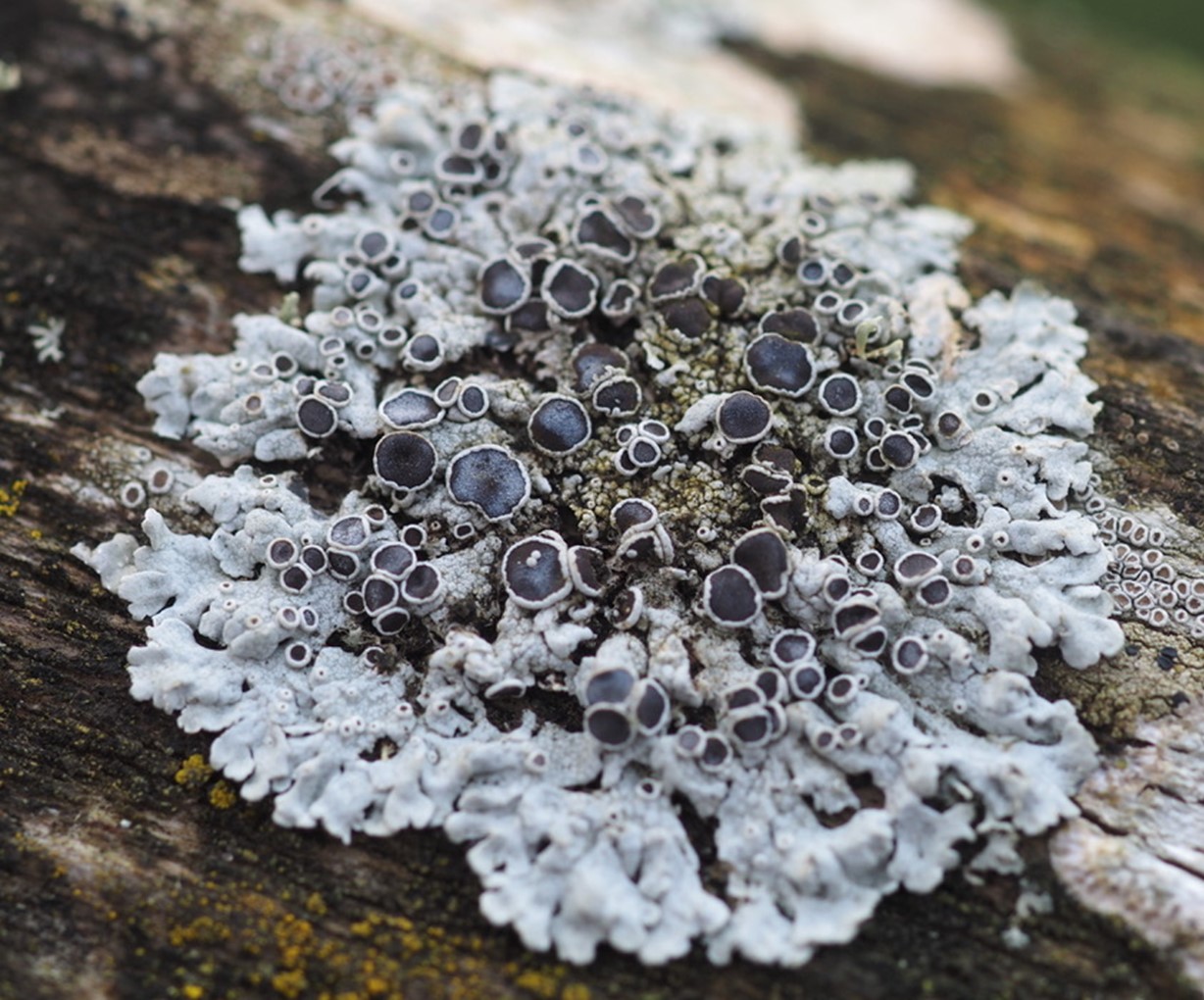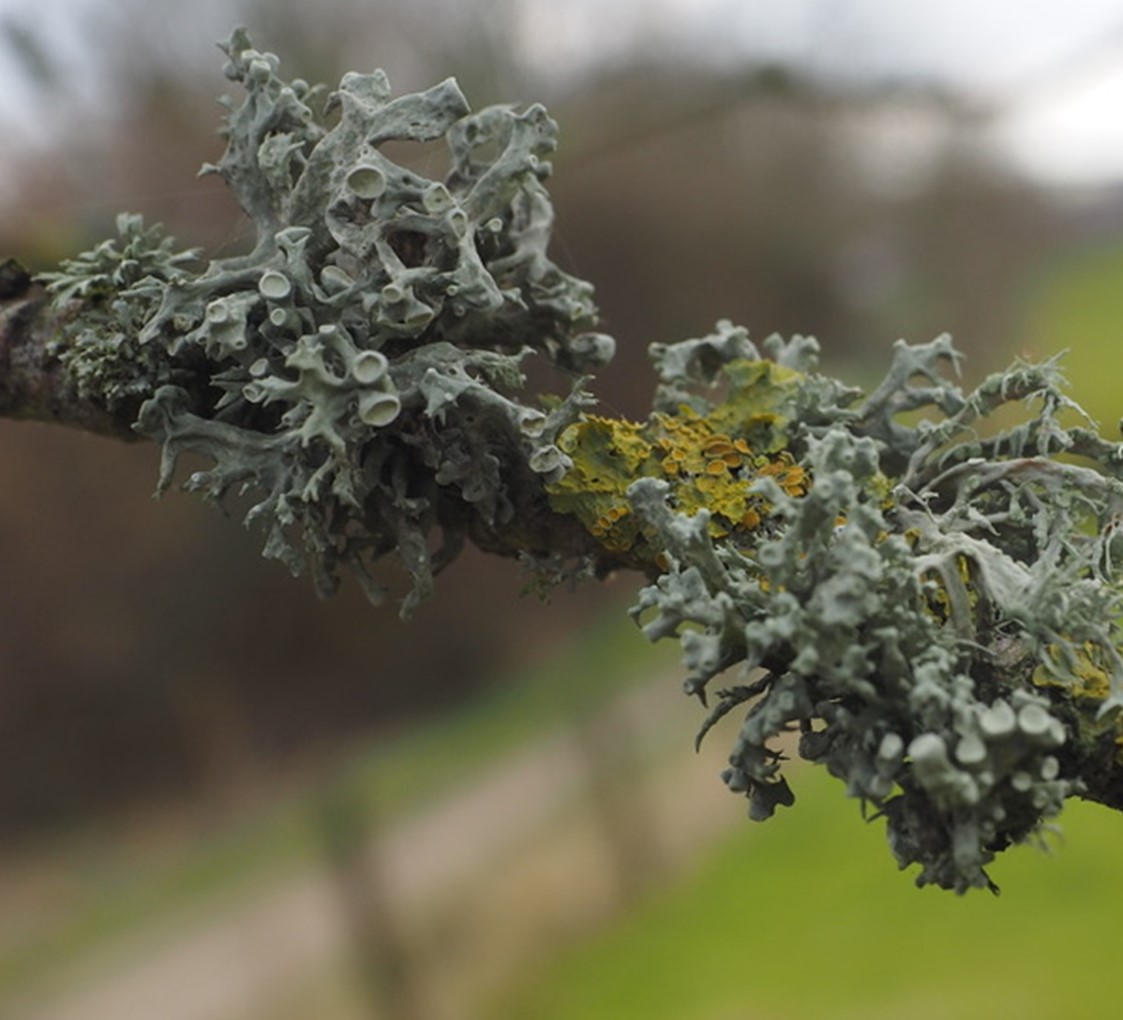
What is a lichen? “A lichen is not a single organism; it is a stable symbiotic association between a fungus and algae and/or cyanobacteria.” Britishlichensociety.org.uk
Where are lichens found? In very simple terms, lichens may be found on stone, brick, roof tiles, trees and wood with the species of lichen varying on the pH of the stone or bark. There are over 1800 species of lichen in Britain.
What do lichens look like? The banner photograph shows a crustose lichen. As the name suggests these form a crust on the substrate to which they are firmly attached.
 |
 |
| Physcia aipolia is a foliose lichen | Ramalina fastigiata is a fruticose lichen |
Foliose lichens are leaf like and attached to the substrate from the lower surface at multiple points.
Fruiticose lichens are tree like and attached to the surface at a single point.
Are lichens harmful to our trees? No – they are very useful indicators of clean air and different lichens will have different tolerances to polluted air.
How do I start to identify lichens? Firstly, one needs a magnifying glass with x 10 and x 20 magnification. The Field Studies Council (field-studies-council.org) supplies some simple identification guides. The British Lichen Society sells Lichens - an illustrated guide to British and Irish Species. Both organisations offer on-line courses with the former making a charge.
A list of lichens so far recorded in and around Sutton Poyntz can be found in the Reports section. Click here to go to it.
If you think you may have discovered a new one or an existing one in a new location John Newbould is happy to help to confirm.
